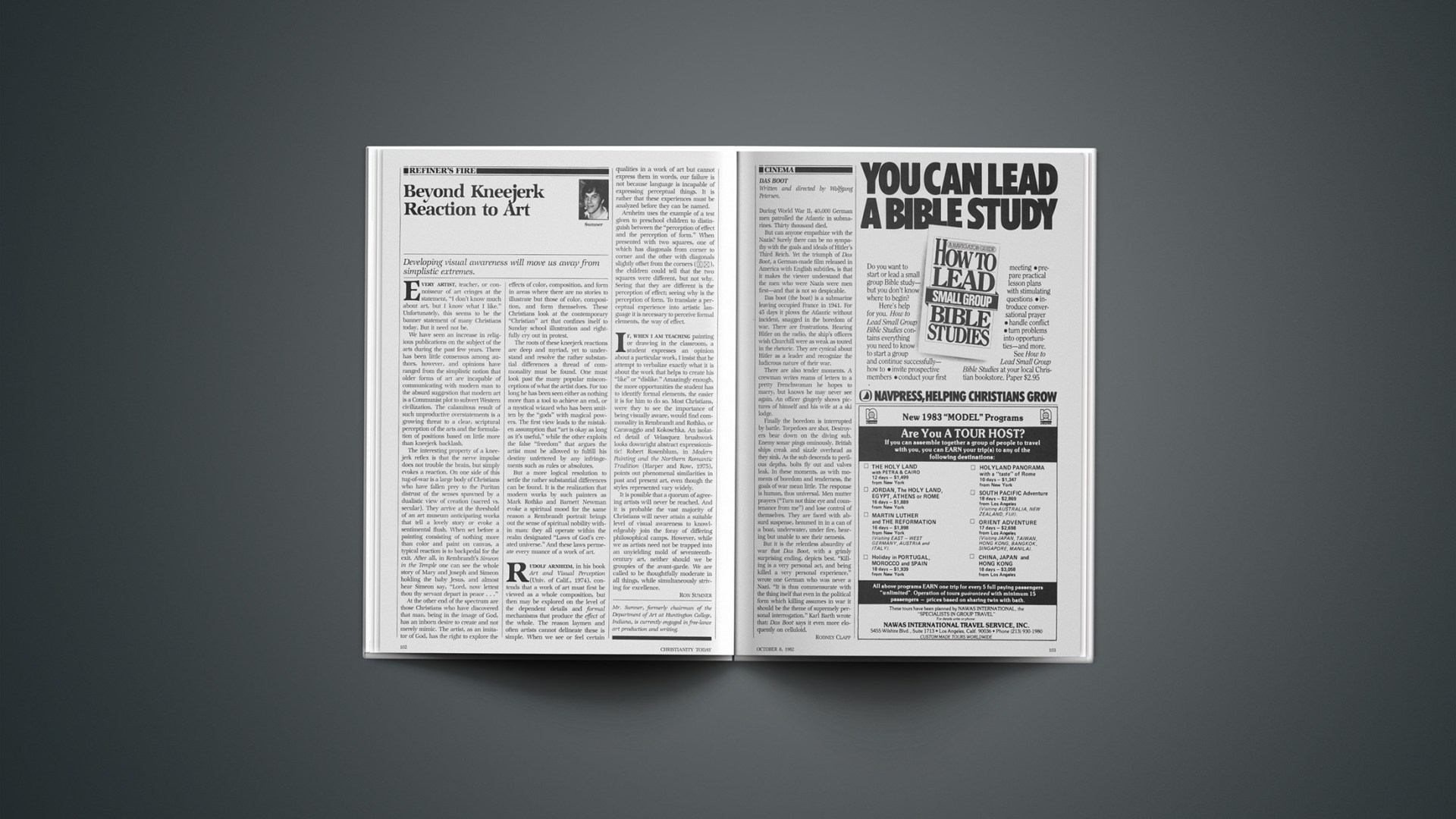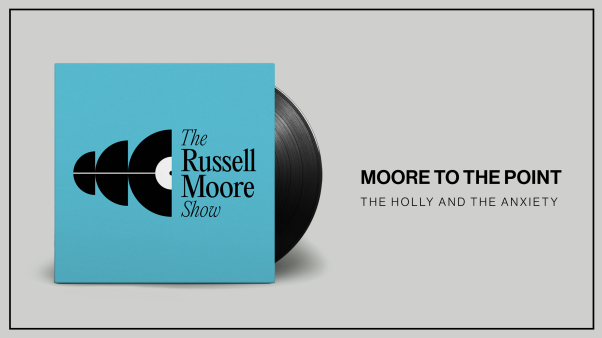Developing visual awareness will move us away from simplistic extremes.
Every artist, teacher, or connoisseur of art cringes at the statement, “I don’t know much about art, but I know what I like.” Unfortunately, this seems to be the banner statement of many Christians today. But it need not be.
We have seen an increase in religious publications on the subject of the arts during the past few years. There has been little consensus among authors, however, and opinions have ranged from the simplistic notion that older forms of art are incapable of communicating with modern man to the absurd suggestion that modern art is a Communist plot to subvert Western civilization. The calamitous result of such unproductive overstatements is a growing threat to a clear, scriptural perception of the arts and the formulation of positions based on little more than kneejerk backlash.
The interesting property of a kneejerk reflex is that the nerve impulse does not trouble the brain, but simply evokes a reaction. On one side of this tug-of-war is a large body of Christians who have fallen prey to the Puritan distrust of the senses spawned by a dualistic view of creation (sacred vs. secular). They arrive at the threshold of an art museum anticipating works that tell a lovely story or evoke a sentimental flush. When set before a painting consisting of nothing more than color and paint on canvas, a typical reaction is to backpedal for the exit. After all, in Rembrandt’s Simeon in the Temple one can see the whole story of Mary and Joseph and Simeon holding the baby Jesus, and almost hear Simeon say, “Lord, now lettest thou thy servant depart in peace …”
At the other end of the spectrum are those Christians who have discovered that man, being in the image of God, has an inborn desire to create and not merely mimic. The artist, as an imitator of God, has the right to explore the effects of color, composition, and form in areas where there are no stories to illustrate but those of color, composition, and form themselves. These Christians look at the contemporary “Christian” art that confines itself to Sunday school illustration and rightfully cry out in protest.
The roots of these kneejerk reactions are deep and myriad, yet to understand and resolve the rather substantial differences a thread of commonality must be found. One must look past the many popular misconceptions of what the artist does. For too long he has been seen either as nothing more than a tool to achieve an end, or a mystical wizard who has been smitten by the “gods” with magical powers. The first view leads to the mistaken assumption that “art is okay as long as it’s useful,” while the other exploits the false “freedom” that argues the artist must be allowed to fulfill his destiny unfettered by any infringements such as rules or absolutes.
But a more logical resolution to settle the rather substantial differences can be found. It is the realization that modern works by such painters as Mark Rothko and Barnett Newman evoke a spiritual mood for the same reason a Rembrandt portrait brings out the sense of spiritual nobility within man: they all operate within the realm designated “Laws of God’s created universe.” And these laws permeate every nuance of a work of art.
Rudolf arnheim, in his book Art and Visual Perception (Univ. of Calif., 1974), contends that a work of art must first be viewed as a whole composition, but then may be explored on the level of the dependent details and formal mechanisms that produce the effect of the whole. The reason laymen and often artists cannot delineate these is simple. When we see or feel certain qualities in a work of art but cannot express them in words, our failure is not because language is incapable of expressing perceptual things. It is rather that these experiences must be analyzed before they can be named.
Arnheim uses the example of a test given to preschool children to distinguish between the “perception of effect and the perception of form.” When presented with two squares, one of which has diagonals from corner to corner and the other with diagonals slightly offset from the corners (⊠⊠), the children could tell that the two squares were different, but not why. Seeing that they are different is the perception of effect; seeing why is the perception of form. To translate a perceptual experience into artistic language it is necessary to perceive formal elements, the way of effect.
If, when i am teaching painting or drawing in the classroom, a student expresses an opinion about a particular work, I insist that he attempt to verbalize exactly what it is about the work that helps to create his “like” or “dislike.” Amazingly enough, the more opportunities the student has to identify formal elements, the easier it is for him to do so. Most Christians, were they to see the importance of being visually aware, would find commonality in Rembrandt and Rothko, or Caravaggio and Kokoschka. An isolated detail of Velasquez brushwork looks downright abstract expressionistic! Robert Rosenblum, in Modern Painting and the Northern Romantic Tradition (Harper and Row, 1975), points out phenomenal similarities in past and present art, even though the styles represented vary widely.
It is possible that a quorum of agreeing artists will never be reached. And it is probable the vast majority of Christians will never attain a suitable level of visual awareness to knowledgeably join the foray of differing philosophical camps. However, while we as artists need not be trapped into an unyielding mold of seventeenth-century art, neither should we be groupies of the avant-garde. We are called to be thoughtfully moderate in all things, while simultaneously striving for excellence.
Mr. Sumner, formerly chairman of the Department of Art at Huntington College, Indiana, is currently engaged in free-lance art production and writing.










